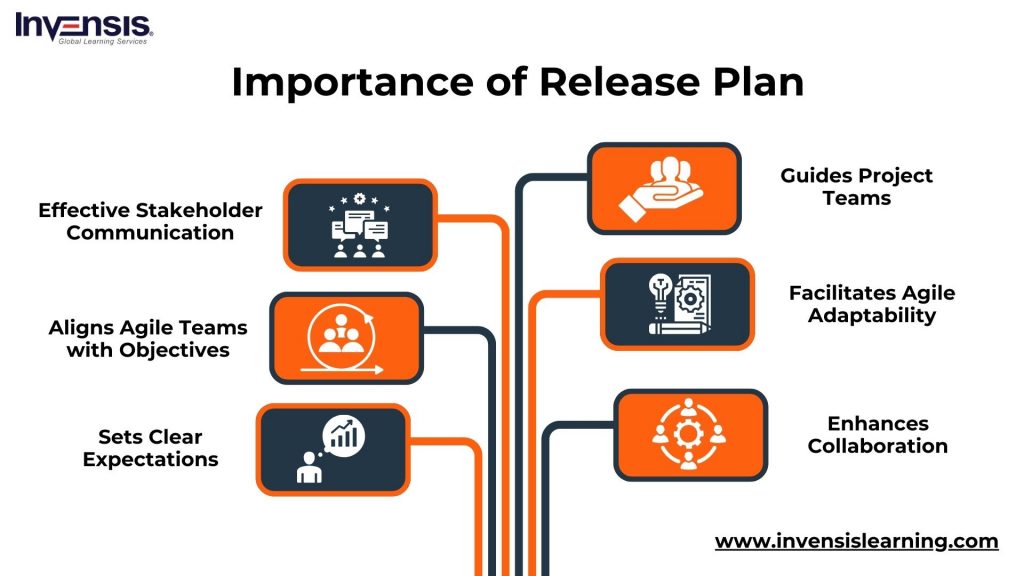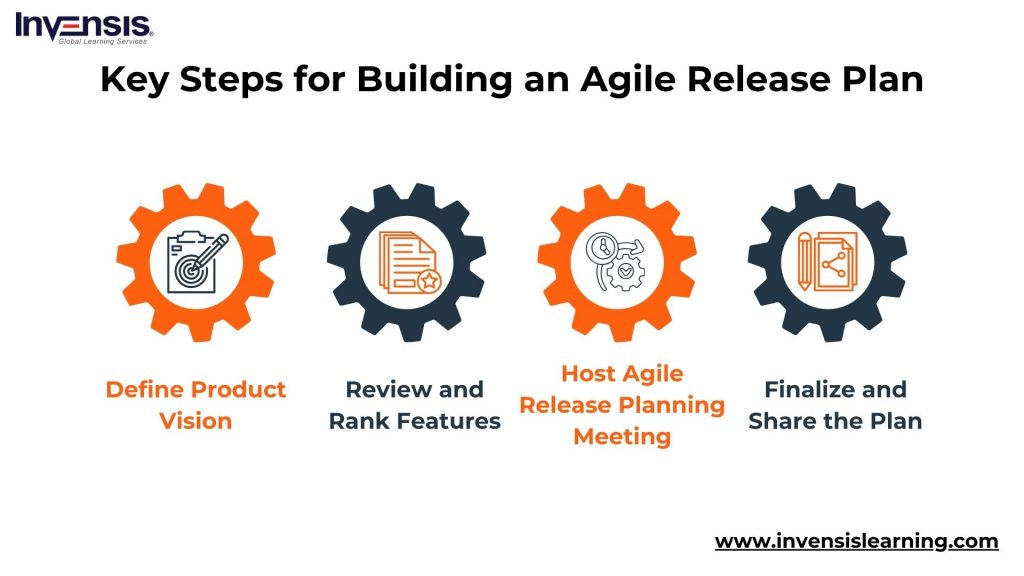
The Agile methodology has emerged as a basis for organizations aiming to enhance adaptability and responsiveness in their project management practices. The Agile’s iterative and collaborative approach lies in a crucial process – release planning. In delivering value efficiently and effectively, understanding release planning becomes essential.
A comprehensive understanding of its concepts, best practices, and overall significance is crucial to navigating the complexities of Agile release planning and ensuring its optimal implementation.
This blog serves as a guide to explaining the complexities of Agile Release Planning, providing in-depth knowledge of the key components contributing to the successful delivery of software solutions.
Table of Contents
- What is an Agile Release Plan?
- Importance of Release Plan
- Key Steps for Building an Agile Release Plan
- Conclusion
What is an Agile Release Plan?
An Agile Release Plan is a strategic document that outlines the scope, timeline, and deliverables of a software development project. It is a roadmap for releasing a product or specific features over multiple iterations or sprints within an Agile framework.
The release plan provides a high-level overview of the project’s goals, priorities, and the sequence in which features will be delivered to stakeholders.
It acts as a communication tool, aligning the development team, product owners, and other stakeholders on the project’s direction and expected outcomes. The release plan helps manage expectations, allocate resources effectively, and adapt to changes as the project progresses.
Importance of Release Plan
A Release Plan is significant for project teams and stakeholders, particularly Product Owners in the environments. This powerful communication tool facilitates effective interaction with project stakeholders and sets clear expectations for project outcomes.
The importance of a Release Plan extends beyond communication; it acts as a guide for Agile teams, aligning their efforts with project goals and expectations.
The Release Plan serves as a comprehensive guide for both Product Owners and Agile teams, offering several key benefits:
- Effective Stakeholder Communication: A Release Plan enables Product Owners to communicate project progress and expectations clearly, fostering transparency and understanding among stakeholders.
- Aligns Agile Teams: Serving as a roadmap, the Release Plan aligns Agile teams with the project’s strategic objectives, ensuring a unified understanding of the project’s trajectory.
- Sets Clear Expectations: Detailing features for each release, the plan establishes clear expectations for the development team and stakeholders, enhancing predictability.
- Guides Project Teams: It provides a structured approach to development, helping teams understand their roles, responsibilities, and the overall timeline for project delivery.
- Facilitates Agile Adaptability: Supporting Agile adaptability, the plan allows teams to respond to changing priorities, emerging requirements, and unexpected challenges while maintaining project vision.
- Enhances Collaboration: The well-communicated Release Plan fosters collaboration, encouraging open discussions, feedback, and collective problem-solving for a more agile project environment.
Key Steps for Building an Agile Release Plan
Creating a successful Agile Release Plan involves detailed planning, especially in software development.
Adapted for a similar industry-specific method, here are the key steps to ensure the Agile release plan’s success:
-
Define Product Vision
Start by establishing or revisiting the product vision, involving the product owner, team members, and stakeholders. This forms the foundation for effective release planning, aligning the project with business strengths and goals.
-
Review and Rank Features
Examine the product backlog, prioritizing features by value. Utilize user stories to articulate feature benefits in user terms. Develop a basic roadmap outlining release goals and dates, cross-referenced with the ranked backlog items.
-
Host Agile Release Planning Meeting
Conduct a collaborative Agile release planning meeting involving stakeholders to refine the plan. Discuss the product plan, evaluate past sprints’ architecture and success, and determine the team’s velocity for current sprints. Establish a clear “Definition of Done” for the release.
-
Finalize and Share the Plan
Complete the Agile release plan insights from the meeting and share them with the team. Ensure accessibility for all involved parties, fostering focus and providing a visual guide for staying on schedule.
The last step ensures that the plan is well-established and ready for the successful execution of the project.
By following these key steps, teams can build effective Agile release plans that facilitate the iterative and incremental delivery of high-quality products while remaining responsive to changing priorities and customer needs.
Conclusion
In conclusion, a comprehensive understanding of Agile Release Planning is essential for effective project management. This emphasizes the pivotal role of Agile release plans as dynamic features, explaining their significance in aligning teams, fostering transparency, and facilitating adaptability.
By following the outlined key steps, one can navigate the complexities of software development with precision. Embracing these principles ensures communication and collaboration and establishes a foundation for continuous improvement and the successful delivery of projects within the dynamic landscape of Agile methodologies.
Advance your project management skills with Invensis Learning’s AgilePM Certification courses. Enroll today for a transformative learning experience and empower yourself for success in the dynamic world of Agile project management.
















